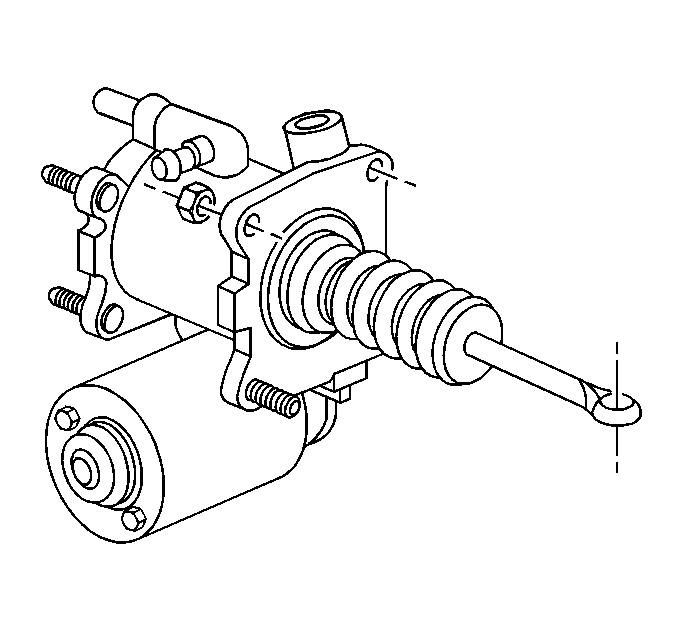
Notice: Use the correct fastener in the correct location. Replacement fasteners
must be the correct part number for that application. Fasteners requiring
replacement or fasteners requiring the use of thread locking compound or sealant
are identified in the service procedure. Do not use paints, lubricants, or
corrosion inhibitors on fasteners or fastener joint surfaces unless specified.
These coatings affect fastener torque and joint clamping force and may damage
the fastener. Use the correct tightening sequence and specifications when
installing fasteners in order to avoid damage to parts and systems.
| • | Replace the seal ring under
the fitting if a leak is detected. |
Tighten
Tighten the return port fitting screw to 4.8 N·m (42 lb in).
| • | If fluid leaks past the plug, replace the spool valve seal. Replacing
the seal does not require removing the hydraulic booster. |
| • | Remove and disassemble the booster if fluid leaks occur at the
common master cylinder brake booster vent. Check the power piston seal. Check
the piston for scratches that may be the source of the leak. If you find
no scratches, replace all seals. Use a booster seal kit. |
| | If fluid leaks past the accumulator cap, replace the seal. Replacing
the seal does not require removing the hydraulic booster. |
| • | If fluid leaks from the mounting bracket vent hole, remove and
disassemble the booster. Check the input rod bore for any scratches that may
be the source of the leak. If you find scratches, replace the housing cover.
If you find no scratches, replace all the seals. Use a booster seal kit. |
| • | If fluid leaks from between the two housings, remove and disassemble
the booster. Replace the housing seal, the input rod seal, and the power piston
seal. Use a booster seal kit. |
| • | If fluid leaks from the pressure port fitting, replace the seal. |
Tighten
Tighten the pressure port fitting to 28 N·m (21 lb ft).

